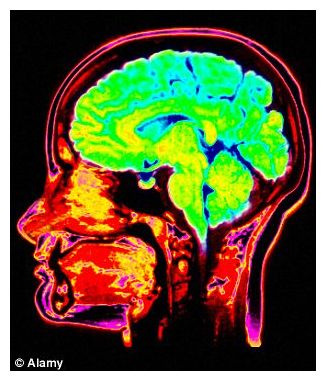
© AlamyAmbitious: Scientists are hoping to build a computer that will simulate the entire human brain.
The human brain's power could rival any machine. And now scientists are trying to build one using the world's most powerful computer.
It is intended to combine all the information so far uncovered about its mysterious workings - and replicate them on a screen, right down to the level of individual cells and molecules.
If it works it could be revolutionary for understanding devastating neurological diseases such as Alzheimer's and Parkinson's, and even shedding light into how we think, and make decisions.
Leading the project is Professor Henry Markram based in Switzerland, who will be working with scientists from across Europe including the Wellcome Trust Sanger Institute at Cambridge.
They hope to complete it within 12 years. He said: 'The complexity of the brain, with its billions of interconnected neurons, makes it hard for neuroscientists to truly understand how it works.
'Simulating it will make it much easier - allowing them to manipulate and measure any aspect of the brain.'
Housed at a facility in Dusseldorf in Germany, the 'brain' will feature thousands of three-dimensional images built around a semi-circular 'cockpit' so scientists can virtually 'fly' around different areas and watch how they communicate with each other.
It aims to integrate all the neuroscience research being carried out all over the world - an estimated 60,000 scientific papers every year - into one platform.
The project has received some funding from the EU and has been shortlisted for a 1 billion euro (£825million) EU grant which will be decided next month.
When complete it could be used to test new drugs, which could dramatically shorten the time required for licencing them than human trials, and pave the way for more intelligent robots and computers.

